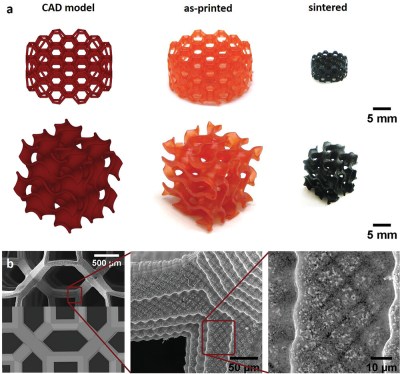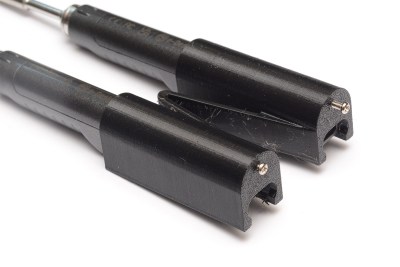
Within the nuclear sciences, including fuel production and nuclear medicine (radiopharmaceuticals), often specific isotopes have to be produced as efficiently as possible, or allow for the formation of (gaseous) fission products and improved cooling without compromising the fuel. Here having the target material possess an optimized 3D shape to increase surface area and safely expel gases during nuclear fission can be hugely beneficial, but producing these shapes in an efficient way is complicated. Here using photopolymer-based stereolithography (SLA) as recently demonstrated by [Alice Zanini] et al. with a research article in Advanced Functional Materials provides an interesting new method to accomplish these goals.
In what is essentially the same as what a hobbyist resin-based SLA printer does, the photopolymer here is composed of uranyl ions as the photoactive component along with carbon precursors, creating solid uranium dicarbide (UC2) structures upon exposure to UV light with subsequent sintering. Uranium-carbide is one of the alternatives being considered for today’s uranium ceramic fuels in fission reactors, with this method possibly providing a reasonable manufacturing method.
Uranium carbide is also used as one of the target materials in ISOL (isotope separation on-line) facilities like CERN’s ISOLDE, where having precise control over the molecular structure of the target could optimize isotope production. Ideally equivalent photocatalysts to uranyl can be found to create other optimized targets made of other isotopes as well, but as a demonstration of how SLA (DLP or otherwise) stands to transform the nuclear sciences and industries.



















